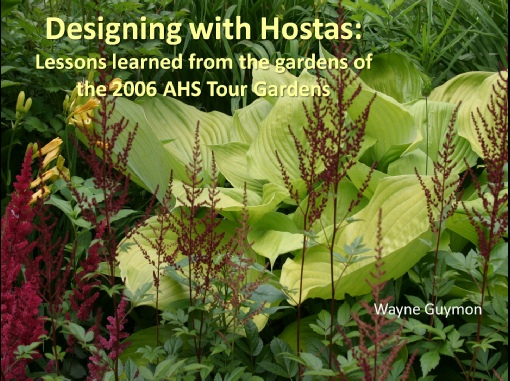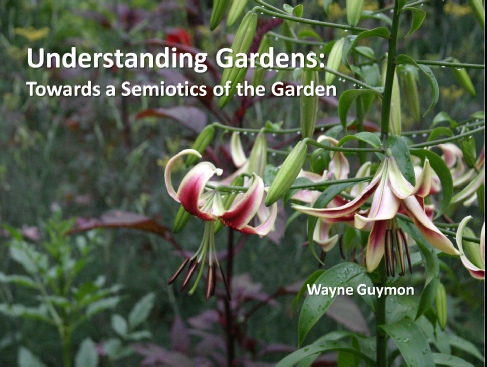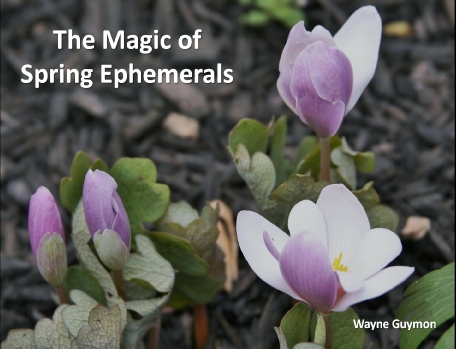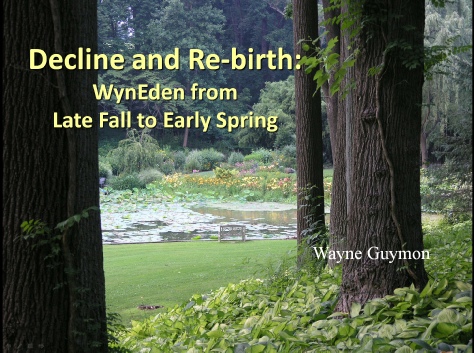Wayne’s Presentations
The Unseen Garden
WynEden gets lots of visitors between May and the end of September, but only a few close friends and real garden addicts ever get to see the garden as it gradually declines and then slowly begins to revive again in late winter to early spring. Early on in my gardening career I was intrigued by the idea of a garden for all seasons where there was always something of interest to see. As a result, I have spent a good deal of effort collecting and growing plants that give interest to the garden during the slow period of the year when the majority of garden enthusiasts are comfortably indoors perusing their garden catalogues. These plants are the central focus of this presentation which allows me to share with others the special magic and beauty of my mostly unseen garden.
Contact us for availability and fees at
WynEden@gmail.com
Lessons Learned
As part of the 2006 National Hosta Association annual convention in Philadelphia, WynEden was included in a tour of the best private Hosta gardens in the area. In preparation for this event, I took it upon myself to document photographically all of the gardens included on the tour. These still photos were subsequently turned into a video with motion and music added. Later when, as President of the local chapter of the NHA, I was asked to speak to area garden clubs about Hostas, I decided to distill my visits to these gardens into a presentation on the esthetics of designing a Hosta garden. This is not another catalogue of a Hostaphiles’ favorite Hostas, but rather an attempt to show how Hostas can be used in the garden to create striking plant combinations and illustrates the same principles of garden design outlined in my presentation entitled “Understanding Gardens: Towards a Semiotics of the Garden.”
The Essential Aesthetic Considerations for Garden Photography
Designed for the casual garden photographer, this presentation briefly reviews the
technical issues associated with digital photography and then shifts to a more in
depth discussion about what makes a garden photo work. This discussion begins with
slides illustrating the different ways in which light impacts a garden photo, then
moves on to cover the three basic types of garden photos: close-
A Photographic Journey through the Major Classical
Gardens of Eastern China
In this presentation, I briefly explore the underlying esthetic principles that guided the creation of the Classical Chinese Garden, explaining why such gardens are so fundamentally different from gardens of the western world. Then I proceed on an in depth photographic tour of two of the most famous gardens of this period: The Yuyuan Garden in Shanghai and the Humble Administrators Garden in Sozhou. This is followed by a review of the key elements of such gardens: Rocks and Water; Portals and Paths and Walls and Windows, drawing on photos of numerous other gardens from this period. This presentation is a distillation of several thousand slides taken when my wife and I last visited mainland China.
Seeing and Talking about Gardens
This is by far my favorite presentation. Here I review some of the history and basic principles of Semiotics, the science of signs, and then show how the basic building blocks our minds use to create meaning through words are also the fundamental principles by which we design our gardens. My goal in this presentation is to provide some tools that will help you understand more clearly what makes a garden scene work. And I provide a paradigm to use to talk about what it is that you see. Of course, the ultimate goal is that once you have learned these principles you can then use them in designing your own garden or those of others.




Spring Ephemerals at WynEden: Part I
Unlike any of my other presentations, this is only about plants, in particular, my favorite early spring geophytes. I begin with a review of the many different types of Bloodroots which grow in my gardens and woodlands and then move through some of the lesser known spring ephemerals such as Cardamines, Trout Lillies, Twin Leaves, spring Anemones and Fumeworts. I end with a photo of a rare variegated Skunk Cabbage. In each case, I try to provide a photographic overview of the many varieties of these plants, including photos of some of the more unusual and seldom seen forms. I also discuss their cultivation.
c 2013 WynEden all rights reserved

